In this issue, we report on our Annual Research Meeting, tell you about the history of our neighbourhood, introduce you to a talented masters student, and give you some great events to add to your calendar. Plus: our regular column by PhD student Jessica Inskip and exciting news from SCI-BC and RHI.
[We do know that it feels like Spring already (for those of us in Vancouver, at least), but technically it’s still Winter until the end of this week. We’ve been really busy since the Fall, as you’ll see below.]
 ICORD’s 12th Annual Research Meeting took place on March 3rd and 4th, and by many accounts, was our best yet. With more than 150 participants, 40 posters, 12 talks by ICORD researchers, and a special appearance by Rick Hansen, there was lots of science and enthusiasm in air.
ICORD’s 12th Annual Research Meeting took place on March 3rd and 4th, and by many accounts, was our best yet. With more than 150 participants, 40 posters, 12 talks by ICORD researchers, and a special appearance by Rick Hansen, there was lots of science and enthusiasm in air.
Our visiting speakers were Dr. John Houle of Drexel University in Philadelphia, Dr. Vivian Mushahwar from the University of Alberta, and Dr. Lyn Jakeman from the National Institutes of Health in Washington, DC.
Our Annual Research Meeting is only open to internal participants (ICORD researchers and their trainees and staff). However, this year we started off our Annual Research Meeting with a Café Scientifique event at GF Strong Rehab Centre. The Client Dining Room was completely full for a delicious dinner from Maurya Restaurant followed by a short overview of some recent SCI research, and a lively discussion with SCI experts, including ICORD researchers Ms. Peggy Assinck, Drs. Chris West, Andrei Krassioukov, Brian Kwon and Wolfram Tetzlaff, SCI-BC Executive Director Dr. Chris McBride, and visiting speaker Dr. Jakeman. This event was webcast by our friends at SCI-BC, and a video is available here.
For a short report on our Annual Research Meeting, click here.

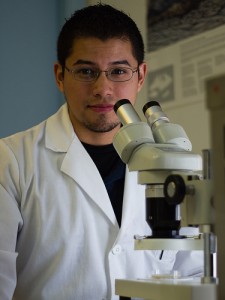 By Clarice Kwok, ICORD Social Media Project Assistant
By Clarice Kwok, ICORD Social Media Project Assistant
Masters student Jose Carlos Gomez can hardly contain his enthusiasm when talking about his research on microspheres, because he’s so excited by the countless potential applications of his work.
Under the guidance of ICORD Principal Investigator and University of Victoria Assistant Professor Dr. Stephanie Willerth, Jose originally started his research on microspheres as a method of delivering retinoic acid (RA) to stem cells. RA is a compound that can be added to stem cell cultures to induce their differentiation into motor neurons.
In some labs, this work is done manually by researchers: they need to deliver RA into the cultures daily so that the RA can interact with the cells from the outside of the stem cell aggregates to the inside to promote their differentiation into motor neurons.
Jose hopes to eliminate the need for this laborious and costly process by encapsulating the RA inside microscopic spheres made of the biodegradable material poly(ε-caprolactone) and then combining the microspheres with stem cell aggregates. As the RA diffuses out of the microspheres, the stem cells interact with this biochemical and begin differentiating, from within the aggregate to the outside.
Not only will the use of microspheres reduce the amount of labour that is necessary, but more specification and more differentiation of the stem cells can occur as a result of the inside-out diffusion of the RA. Encapsulating the RA also prevents the chemical from degrading due to light exposure, so more resources are conserved in this process.
The Willerth Lab’s main focus is on tissue engineering and regenerative medicine, but it wasn’t long before Jose and Dr. Willerth realized that their innovative work could be applied to more than just stem cells.
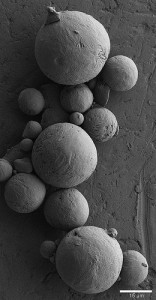 In developing nations like Jose’s homeland of El Salvador, sophisticated water detection and purification technology are often neither readily accessible nor plentiful, so Jose and his colleagues are working on developing a low cost, continuous and long-term method of monitoring changes in water quality using microspheres encapsulating special enzymes that detect bacteria. This method will indicate whether water is safe to drink by changing the colour of a water sample from red (clean) to purple (unclean). Because the microspheres are made of biodegradable polymer which breaks down into non-harmful byproducts, the tested water is also safe to drink!
In developing nations like Jose’s homeland of El Salvador, sophisticated water detection and purification technology are often neither readily accessible nor plentiful, so Jose and his colleagues are working on developing a low cost, continuous and long-term method of monitoring changes in water quality using microspheres encapsulating special enzymes that detect bacteria. This method will indicate whether water is safe to drink by changing the colour of a water sample from red (clean) to purple (unclean). Because the microspheres are made of biodegradable polymer which breaks down into non-harmful byproducts, the tested water is also safe to drink!
To further develop this water-quality detection system, Dr. Willerth’s research group was awarded a grant from Grand Challenges Canada, a funding system that supports health innovations with a focus on sustainability and improving lives. Click here to learn more about this project.
Research findings from one discipline often benefits other areas of research. In this case, Jose’s findings in lab may not only have an impact on other fields of basic science research, but it has the potential to impact health on a global scale.
Are there more possible applications for the microspheres? Of course! According to Jose, “you’re only limited by your imagination!”
—————–
The beautiful image of microspheres was taken with equipment at UVic’s Advanced Microscopy Facility
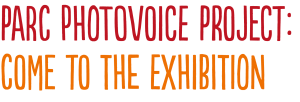 As part of their medical undergraduate program, UBC students Kat Liu and Allan Jone are completing a directed studies project under the supervision of ICORD researchers Drs. Bonita Sawatzky and Ben Mortenson. Their project involved looking at the importance of ICORD’s Physical Activity Research Centre (PARC) in the lives of the people who participate in the research at PARC.
As part of their medical undergraduate program, UBC students Kat Liu and Allan Jone are completing a directed studies project under the supervision of ICORD researchers Drs. Bonita Sawatzky and Ben Mortenson. Their project involved looking at the importance of ICORD’s Physical Activity Research Centre (PARC) in the lives of the people who participate in the research at PARC.
Kat and Allen used a technique called PhotoVoice, which gives participants the opportunity to illustrate their perspectives through photos or videos. Using their own equipment or borrowed tablet camera devices, participants had four weeks to photographically answer the questions, “Has PARC impacted your life? And if so, how?” After receiving the submitted the photographs and videos, Kat and Allen invited participants to explore the meanings behind their photos in one-on-one interviews. And now, after months spent collecting photos, the students and participants are finally ready to share this work in an exhibition on April 9th.
15 to 20 original captioned photos and videos will be displayed in the Blusson Spinal Cord Centre atrium. The exhibition is open to the public; everyone is welcome to come and view the photos and videos, and encouraged to share their own thoughts on the works.
The PARC PhotoVoice Exhibition takes place on Thursday April 9th, 11:30 am to 1:30 pm in the BSCC Atrium.
 The 6th annual Spinal Chord Gala, co-hosted by ICORD and the Vancouver Cantata Singers, took place on Saturday November 1st. Thank you to all our guests, sponsors, staff and volunteers for making this another great night to
The 6th annual Spinal Chord Gala, co-hosted by ICORD and the Vancouver Cantata Singers, took place on Saturday November 1st. Thank you to all our guests, sponsors, staff and volunteers for making this another great night to 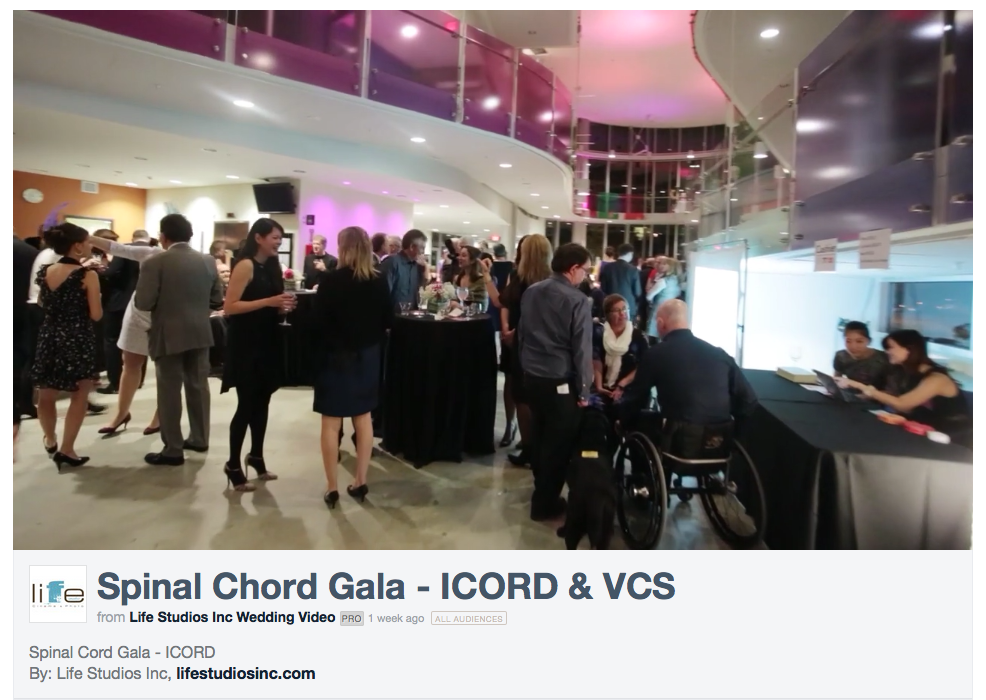 remember. The event raised almost $40,000, and ICORD’s share of the night’s proceeds was $26,600. This funding supports unique research and equipment grants for ICORD researchers.
remember. The event raised almost $40,000, and ICORD’s share of the night’s proceeds was $26,600. This funding supports unique research and equipment grants for ICORD researchers.
We would like to specially thank our Presenting sponsor, Medtronic, for their continued support. Thanks also to Diamond sponsors Life Studios Inc and the Hong Kong Spinal Cord Injury Fund. Click here to see a complete list of our generous gala sponsors.
For a taste of last year’s event, take a look at this beautiful video created for us by Life Studios Inc. How many people do you recognize?
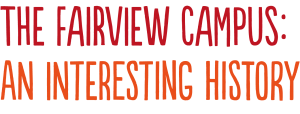 By Chad Atkins, ICORD Social Media Project Assistant
By Chad Atkins, ICORD Social Media Project Assistant
You might know that UBC is celebrating its centennial this year, but did you know that the Blusson Spinal Cord Centre sits on the site of some of the original UBC buildings?
The Blusson Spinal Cord Centre opened its doors on November 18th, 2008. The land itself, however, has a long history of connections to academia and public health care.
Established in 1908, the development of the University of British Columbia’s Point Grey campus was halted during World War I. The University still opened in 1915, however, finding temporary headquarters at buildings on the site of Vancouver General Hospital in Vancouver’s Fairview district. These buildings were formerly occupied by UBC’s predecessor, the McGill University College of British Columbia. These grounds became home to the University’s three faculties (Arts and Science, Applied Science, and Agriculture) for the next decade. Total student enrollment was 379, with 34 full- and part-time faculty.
The only permanent building on this site, a three-story white granite structure borrowed from the hospital, housed arts lecture rooms, faculty and administration offices, a library, and a reading room for students. The other buildings (including a Physics building, an auditorium, and a cafeteria) were cheaply-built wooden structures which gave UBC’s first home its nickname: the “Fairview Shacks”.
This era came with many hardships, and academic life in the Fairview Shacks was not without challenges. With every passing year at this makeshift campus, the inadequacy of facilities became increasingly obvious; student enrollment far exceeded building capacities, and UBC desperately needed new facilities. Several years of student activism, including the Arts ’20 Relay and the Great Trek, eventually spurred the provincial government to resume work on the Point Grey Campus, and on September 22, 1925, the University of British Columbia welcomed approximately 1,400 students to opening lectures at the new Point Grey campus. The history of the Fairview campus, however, doesn’t end there.
In the late 1910s and early 1920s, tuberculosis (TB) was still of epidemic proportions in BC. During this period, the BC government recognized the need for coordinated care for TB patients. When the UBC Arts building finally relocated to Point Grey in 1925, Vancouver General Hospital reclaimed the three-story white-granite building and transitioned it into their TB building, which later became the headquarters for the provincial Division of TB Control In 1935. The Division of TB Control renamed this building the Willow Chest Centre, and it remained the headquarters for TB care until the late 1990s.
Part of the Willow Chest Centre was demolished in 2006 to make way for the construction of the Blusson Spinal Cord Centre. The rest of the original granite building came down in the summer of 2014. The Joseph and Rosalie Segal Family Health Centre will be built in its place.
![The neighbourhood in the 1920s, looking east and showing the site of the BSCC. Heather Pavilion is the only building still standing. Photo courtesy of University of British Columbia Archives, Nowell photo [UBC 1.1/1317]](http://icord.org/wp-content/uploads/2015/03/fairview-site2-1024x534.png)
The neighbourhood in the 1920s, looking east and showing the site of the BSCC. Heather Pavilion is the only building still standing. Photo courtesy of University of British Columbia Archives, Nowell photo [UBC 1.1/1317] Click photo to enlarge.
 New funding is available for researchers outside of Canada who’d like to collaborate with the researchers at ICORD. Applications for the VISIT program for international trainees and the ICORD Distinguished Visiting Scholar are being accepted until April 15th. Funding for these opportunities is provided by the Rick Hansen Foundation as part of the Blusson Integrated Cures Partnership with ICORD. One goal of this partnership is to promote the creation of an international network of SCI researchers for pursuing research, clinical trials, and participation of people with SCI in clinical trials.
New funding is available for researchers outside of Canada who’d like to collaborate with the researchers at ICORD. Applications for the VISIT program for international trainees and the ICORD Distinguished Visiting Scholar are being accepted until April 15th. Funding for these opportunities is provided by the Rick Hansen Foundation as part of the Blusson Integrated Cures Partnership with ICORD. One goal of this partnership is to promote the creation of an international network of SCI researchers for pursuing research, clinical trials, and participation of people with SCI in clinical trials.
VISIT Program: available for international distinguished trainees and scholars. VISIT stands for “Visit ICORD on a Scholarship for International Trainees,” and this program will support partial expenses for a trainee’s visit to ICORD (up to $10,000 CAD). This award is for international applicants only and priority will be given to applicants from developing countries. ICORD Distinguished Visiting Scholar Program: for visiting scholars (including established discovery scientists, clinical researchers, or clinicians) for their visit to ICORD, up to $15 000 CAD. Priority will be given to scholars who are visiting from outside of Canada.
The application deadline is April 15th. Click here for more information.

 By Jessica Inskip (@jessinskip), PhD Student in Dr. Victoria Claydon’s Lab at Simon Fraser University
By Jessica Inskip (@jessinskip), PhD Student in Dr. Victoria Claydon’s Lab at Simon Fraser University
Scientists don’t normally tell our stories – just the facts, ma’am – yet our stories often make our research more compelling and help us communicate results. A recent story about Dr. Murray Blackmore reveals his family’s connection to spinal cord injury and candidly speaks about the emotional ups and downs of research. It puts his research into context and reminds us that researchers are unfailingly human.
The thrill of research, of finding something new, of looking down the microscope at something no one has ever seen before–or failed to notice, keeps many of us engaged. Some of us get so involved in our research we eschew social and societal obligations and commitments while we are on the hunt.
However, it’s often our personal stories and experiences that keep us motivated through the long dull stretches of research, analyzing endless spreadsheets or staining slides. The late hours in the lab don’t seem as onerous when we are chasing something bigger than a degree.
My own interest partly comes from my work as a personal care assistant for my friend, Dr. John Christensen, who has quadriplegia from a horseback riding accident. Working for John has deepened my appreciation for the daily realities of living with SCI, and how our research has tangible and important implications for peoples’ lives – and hopefully ways to improve them!
Whatever our motivation, we’re all in this together!
 Passive hind-limb cycling improves cardiac function and reduces cardiovascular disease risk in experimental spinal cord injury in Journal of Physiology Apr 15;592(Pt 8):1771-83. By Christopher West, Mark Crawford, Malihe Poormasjedi-Meibod, Katharine Currie, Andre Fallavollita, V Yuen, JH McNeill, and Andrei Krassioukov.
Passive hind-limb cycling improves cardiac function and reduces cardiovascular disease risk in experimental spinal cord injury in Journal of Physiology Apr 15;592(Pt 8):1771-83. By Christopher West, Mark Crawford, Malihe Poormasjedi-Meibod, Katharine Currie, Andre Fallavollita, V Yuen, JH McNeill, and Andrei Krassioukov.
Dr. West is one of ICORD’s newest Principal Investigators. This important study is the first to report that the major heart chamber (the left ventricle) which pumps blood to the majority of the body reduces in size and function after spinal cord injury in a rodent model. This reduction in function caused a subsequent stiffening of the heart muscle which in turn limited the effectiveness to which the heart can pump blood. Perhaps the most surprising finding was that these changes began to occur within one week post injury, which we believe is equivalent to approximately one-to-three months in a human with spinal cord injury. The second major finding of this publication was that passively exercising the lower limbs with a motor driven exercise bike completely reversed the changes that occurred due to the spinal cord injury. These findings demonstrate that changes in the cardiovascular system occur rapidly after spinal cord injury and highlight the importance of exercise during rehabilitation and beyond to maintain a healthy heart.
Access the scientific abstract.
Optical diagnosis of lower urinary tract infection: a pilot study in children, in Journal of Pediatric Urology. By Babak Shadgan, Mark Nigro, Andrew Macnab, Mehdi Fareghi, Lynn Stothers, Lida Sharifi-Rad, Abdol-Mohammad Kajbafzadeh.
In the Fall 2014 issue of the ICORDian, we told you about NIRS (Near Infrared Spectroscopy) and how this technology can be used to non-invasively detect urinary tract infections. This new paper by ICORD postdoctoral fellow Dr. Babak Shadgan shows that NIRS is effective in diagnosing UTI in young children, which is important because young children are not able to verbally communicate that they feel unwell.
 Our friends at Spinal Cord Injury BC are holding their annual Ugly Tie fundraiser next week. You can support them by participating in Ugly Tie week, going to the Ugly Tie Affair (March 25th), and bidding in their online auction (there’s some pretty interesting stuff here!). If neckwear’s not your thing, you can still support this worthy cause by donating online.
Our friends at Spinal Cord Injury BC are holding their annual Ugly Tie fundraiser next week. You can support them by participating in Ugly Tie week, going to the Ugly Tie Affair (March 25th), and bidding in their online auction (there’s some pretty interesting stuff here!). If neckwear’s not your thing, you can still support this worthy cause by donating online.
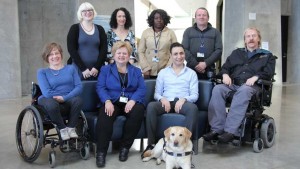 Our friends at the Rick Hansen Foundation (RHF) are happy to welcome a new team of Accessibility Specialists this month. Each specialist not only has first-hand experience with accessibility issues, they also bring a wealth of experience and knowledge in other fields including information technology, sales, translation and interpretation, life coaching, journalism, engineering, and communications. Together, they will be offering free accessibility assessments and working with businesses and venues in Vancouver and Richmond, British Columbia using RHF’s Planat tool. This project aims to help improve the accessibility of public venues and raise awareness about its importance within the business community. Click here for more.
Our friends at the Rick Hansen Foundation (RHF) are happy to welcome a new team of Accessibility Specialists this month. Each specialist not only has first-hand experience with accessibility issues, they also bring a wealth of experience and knowledge in other fields including information technology, sales, translation and interpretation, life coaching, journalism, engineering, and communications. Together, they will be offering free accessibility assessments and working with businesses and venues in Vancouver and Richmond, British Columbia using RHF’s Planat tool. This project aims to help improve the accessibility of public venues and raise awareness about its importance within the business community. Click here for more.
This project is made possible thanks to the Employment Program of British Columbia, which is funded by the Government of Canada and the Province of British Columbia.
March 25th Support SCI-BC at the Ugly Tie Affair: Click here for tickets/info.
April 9th PARC PhotoVoice Exhibition: 11:30am to 1:30pm in the BSCC Atrium. No charge • everyone welcome
April 14th Changing minds changing lives: rehabilitation through sport, OR everything you ever wanted to know about being a Paralympic Athlete. Presented by ICORD Trainee and Paralympian Peggy Assinck on behalf of the Canadian Paralympic Committee. 12-1pm; pizza lunch provided. No charge • everyone welcome. (but please note that due to space and budget limitations, lunch will be provided for the first 70 people to arrive).
May 19th 3rd International Autonomic Symposium: Dysfunctions of the Autonomic Nervous System: Organized by Dr. Andrei Krassioukov and his team, this symposium will focus on the poorly understood and, until recently, ignored topic of autonomic dysfunctions that individuals with spinal cord injury (SCI) and other neurological disorders face on a daily basis. The Symposium will examine the latest advances in clinical and basic research on autonomic dysfunctions in these populations, and will gather experts in various disciplines of medicine, basic science and the community to provide a truly multidisciplinary platform for participants to exchange ideas and learn from each other. For more information, click here
Thanks for reading this issue of the ICORDian–we hope you enjoyed it! Please subscribe and have future issues delivered to your email box. If you have any comments about this issue or suggestions for future ones, please contact us.





